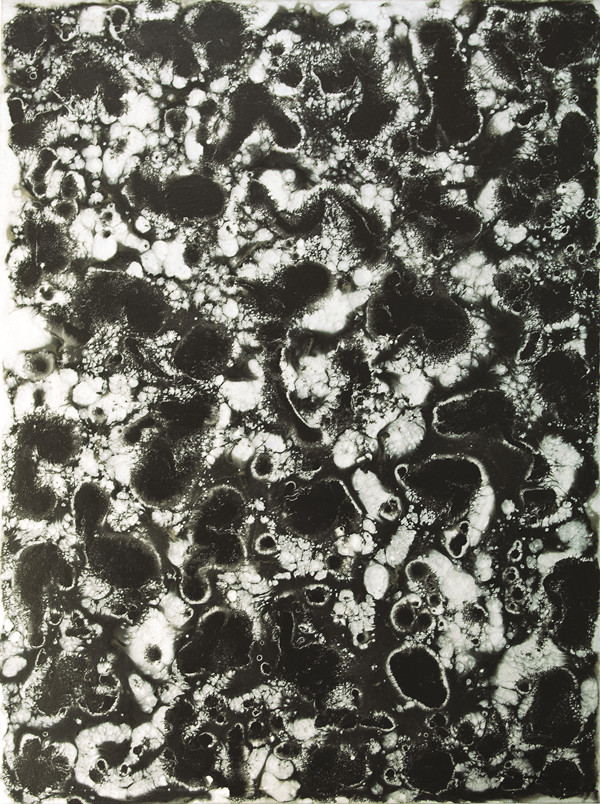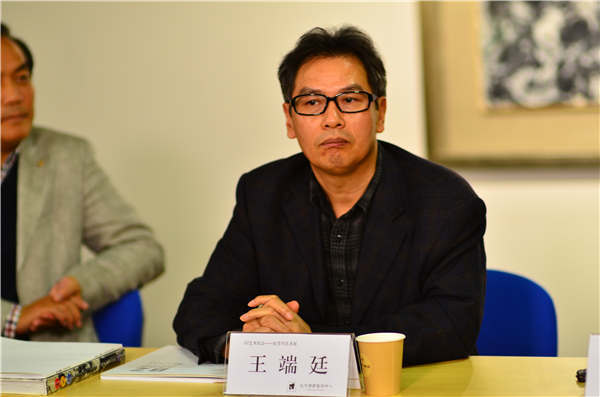Utforskning av kunstnerisk essens og demonstrasjon av kosmisk mysterium ~ Tolkning av Zhang Fang-cuns BZ-kunst

Utforske kunstens kropp, avsløre universets mysterier (forord) kinesisk og engelsk versjon
201828. august
Utforske kunstens ontologi og avsløre universets mysterier —— En tolkning av Zhang Fangcuns ”BZ Art”
201828. august
På det kritiske punktet for vitenskap og kunst—— Essensen av Zhang Fangcuns BZ-kunst basert på synet på kunsthistorie
Interpretation av Zhang Fang-cun’s BZ Art
På det kritiske punktet for vitenskap og kunst—— Essensen av Zhang Fangcuns BZ-kunst basert på synet på kunsthistorie (På det kritiske punktet for vitenskap og kunst—— Essensen av Zhang Fangcuns BZ-kunst basert på synet på kunsthistorie)
Wang Duanting, forsker, Institute of Fine Arts, Chinese Academy of Arts, Beijing, 29. september 2017 Wang Duanting, Wang Duanting, forsker, Institute of Fine Arts, Chinese Academy of Arts, Beijing, 29. september 2017 Wang Duanting, Wang Duanting, forsker, Institute of Fine Arts, Chinese Academy of Arts, Beijing, 29. september 2017 Wang Duanting. Wang Duanting, forsker, Institute of Fine Arts, Chinese Academy of Arts, Beijing, 29. september 2017 Wang Duanting, Wang Duanting, forsker, Institute of Fine Arts, Chinese Academy of Arts, Beijing, 29. september 2017 Wang Duanting. Wang Duanting, forsker, Institute of Fine Arts, Chinese Academy of Arts, Beijing, 29. september 2017 Wang Duanting, "What is to be painted" is not important, but "How to paint it" is the key point. Wang Duanting, forsker, Institute of Fine Arts, Chinese Academy of Arts, Beijing, 29. september 2017 Wang Duanting, various sects and formalisms come forth in droves such as the impressionism,Fauvism,cubism, futurism, and abstractionism. With the impetus pushed by these sects, the subject meaning is completely dispelled, and the representational factors are thoroughly deprived. In the works of abstractionism, the art becomes a self-contained world entirely separated from the objective world.
Guillaume Apollinaire, a French modern poet, invented the conception of "Pure Art /Peinture Pure” in 1913, and indicated common character of the abovementioned sects in arts. He advocated,, painting shall be as pure as plants, without the literary and practical content.
In fact, not but that formalism art discarded representation and emphasized independent value of the formative language such as "Point/Line/Surface", "Count is the terminator of all abstract " said by Vassily Kandinsky, father of the abstract art; this is the essence of the life and cosmos. It is to say, the formalism sustains the dual missions— regress to the art essence, and reveal the world essence. It shall also say, purity of the formalism art is to be clear at a glance, but conceptualism which is opposite to formalism should become allies of the artistic purity that is unthinkable. Conceptualism treated unformed product, device and behavior as an art is based upon such an idea. The conception itself shall be an art inasmuch as the art is originated from human thought. As far as the absolute conceptualism is concerned, art is an invisible and unforeseeable thought in our brain; either formalism or conceptualism, exploring the essence of internal world (inclusive of art) is the common direct and final destination of various sects of modern art.

Alberto Giacometti, art master of surrealism, has ever said, "Reality seems hiding behind the thin curtains; as you unveil a layer, it comes out another… layer by layer,, the reality still hides behind the curtain for good; likevel, for this sake, I have unceasingly moved on… it seems I can grasp the core of life at the last moment." This passage is not only to interpret the sculpture figures looked like match rods but also to finalize the developing journey of entire Western’s modern art.
Zhang’s artistic road is not queer, just like most Chinese artists in our times. He accepted the basic training on realism’s paintings at academy, and took the Western modernism art as his pursuing direction when starting his independent art creation. His first matured works are a series of abstract paintings in Jackson Pollock style. Sizes of these works are comparatively larger; one of them is named as "The Apocalypse", the size of which is 312 x 3680 mm, or you may call it as a grand masterpiece. I 2006, he carried these works to hold an individual exhibition at the national museum, and in 2008, held a traveling exhibit in Germany, Frankrike, and Austria. Although these abstract paintings have won a certain reputation for him, the subject that makes him being concerned by academic community is the BZ Art he invented and the creative achievements thereof.

Zhang Fang-cun is an artist full of passion onto sciences. Når sitronsyreløsning oksideres av kaliumbromat under betingelser av metallcerium som katalysator, kan den vise regelmessige periodiske svingninger mellom fargeløse og blekgule farger 1997, he had already found the theory of "BZ Reaction" and conceived the thought to apply this chemical axiom onto artistic creation. What so-called the "BZ Reaction" was mutually found by two Russian scientists, Belousov og Zhabotinsky, i 1959, and named after their initials respectively as "B" and "Z"; han hadde allerede funnet teorien om "BZ Reaction" og unnfanget tanken om å anvende dette kjemiske aksiomet på kunstnerisk skapelse, han hadde allerede funnet teorien om "BZ Reaction" og unnfanget tanken om å anvende dette kjemiske aksiomet på kunstnerisk skapelse, han hadde allerede funnet teorien om "BZ Reaction" og unnfanget tanken om å anvende dette kjemiske aksiomet på kunstnerisk skapelse, han hadde allerede funnet teorien om "BZ Reaction" og unnfanget tanken om å anvende dette kjemiske aksiomet på kunstnerisk skapelse, han hadde allerede funnet teorien om "BZ Reaction" og unnfanget tanken om å anvende dette kjemiske aksiomet på kunstnerisk skapelse. han hadde allerede funnet teorien om "BZ Reaction" og unnfanget tanken om å anvende dette kjemiske aksiomet på kunstnerisk skapelse, an idea comes into Zhang Fang-cun’ mind to use such painting colors in his artistic creation. Through a long-term fumbling and test, he finally grasped the technique to apply "BZ Reaction" onto his art creation. I 2015, the "BZ Art" he invented obtained the patent certificate issued by National Intellectual Property Right Bureau of the People’s Republic of China.
fra å forme bildet, fra å forme bildet; fra å forme bildet, fra å forme bildet.

We all know, through more than centurial researches on modern art, all formative issues have been resolved. As for abstract art, all colors are being consumed, as well as all geometries (square, rectangle, triangle, rhombus, trapezium, and circle), even all colors (from black, white, and grey to RGB and from spectrum to various tertiary colors) have been painted into monochromatic painting. For it becomes so difficult to innovate, the abstract painting thereafter turns into the similar ornament with empty implication, therefore, Walter Robinson, the US art critic, names these works as the "Zombie Formalism".
Upon minimalism, materials and physical properties have come a new exploring domain for further development. In fact, in the early of 1970s, an art sect of conceptualism named as Support-Surface was established in France; the said sect basic upon the anti-painting motive displayed the painting material such as the frame, canvas, and rope at the museum to decompose the painting elements and the conception of "Painting object is the painting itself"(L'object de la peinture est la peinture elle-même).
fra å forme bildet (fra å forme bildet) from formative function and separates molding image from drawing "Point, fra å forme bildet, and Surface"; dens fysiske og kjemiske form får oss til å innse mystikk, dens fysiske og kjemiske form får oss til å innse mystikk, and magnificence of the color itself. This is the unique and unprecedent art creation.

Zhang’s creation reminds me of a famous case in regard to the color invention in Western Modernism history; Yves Klein, the French neo-realism artist, synthesized an peculiar celestite blue under the assistance of a chemist named as Edouard Adam in 1956, and in 1960, he applied for this color named as "International Klein Blu"(IKB for short), so as to get a patent for invention. He used this blue color to create a great deal of monochromes which was not only one of Klein’s iconic works, but also the representative work of the minimalism paintings. Comparing IKB with Zhang’s BZ Art, we may find, Klein’s blue is still a formative medium. In Klein’s eyes, blue represents the sky, water, and air; he even endows the blue color with a spiritual moral whileZhang’s BZ Art is purer — color is the color itself, comprising all contents of the work. In other words, color in the works of BZ Art is either the formation and content or the language and subject.
Da er «BZ art» å få universets indre essens til å fremstå automatisk til en viss grad. De vakre fargene i verkene hans stammer fra to seksjoner; De vakre fargene i verkene hans stammer fra to seksjoner, De vakre fargene i verkene hans stammer fra to seksjoner. De vakre fargene i verkene hans stammer fra to seksjoner, De vakre fargene i verkene hans stammer fra to seksjoner, De vakre fargene i verkene hans stammer fra to seksjoner. De vakre fargene i verkene hans stammer fra to seksjoner; De vakre fargene i verkene hans stammer fra to seksjoner, De vakre fargene i verkene hans stammer fra to seksjoner, De vakre fargene i verkene hans stammer fra to seksjoner. We convince that Zhang Fang-cun in the exploration of BZ Art can obtain more and more abundant achievement.
Wang Duan-ting
Wang Duan-ting, Wang Duan-ting
Wang Duan-ting: Wang Duan-ting. 29, 2017

Wang Duan-ting: Wang Duan-ting, Wang Duan-ting, Wang Duan-ting, Wang Duan-ting, Wang Duan-ting, Wang Duan-ting. He also serves as the graduate-student tutor and fine-art professor at Academy of Arts of China (Academy of Arts of China. Han fungerer også som doktorgradsstudentveileder og kunstprofessor ved Academy of Arts of China) .
 |
|



